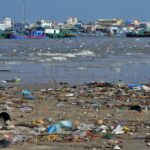Responsibility and efficiency in managing natural resources for future generations are prerequisites for sustainable development. In this context, it means preserving the ecological balance while also advancing economically.
Sustainable development policies are currently being implemented at a local or global level by various countries and administrations. As a result, we’ve compiled a list of ten real-world examples of sustainable development.
Inorganic trash can be recycled into containers, bags, bottles, and other recyclable materials, such as paper and cardboard.
Non-biodegradable waste
Plant compost can be made out of biodegradable waste that has been recycled and treated. It is made up of a variety of organic elements. In agriculture and gardening, compost is an example of what you can do with it.
Plants that generate electricity from the sun
Electricity is generated by solar power plants, which use the sun’s energy to do so. A sort of renewable and environmentally friendly energy.
There are also a number of wind farms.
Wind farms are large concentrations of wind turbines, which harness the power of the wind to generate electricity. They are an environmentally friendly option for generating power.

The energy derived from the waves
The hydraulic pressure generated by the waves is transferred to floating buoys, where it is transformed into electrical energy. This process is called generating wave energy. It is a renewable energy source that really is currently being researched.
Organic farming practises
When it comes to organic farming, there are no chemicals and genetically modified organisms involved. Additionally, it lowers the effects of the greenhouse effect and enhances fertility by ensuring the protection of soils & resources while producing organic food.
Rainwater harvesting
To avoid wasting such a valuable resource as rainfall, it is imperative that it be collected and stored.
Ecotourism is a growing industry
This type of tourism is referred known as ecotourism because of its focus on the environment. There is a greater emphasis on experiencing rural life and savouring nature, including its flora, animals, and terrain. In addition, it avoids environmental damage or pollution caused by typical tourist activities. ”
Bicycle path with solar power
The solar cycle route is an environmentally friendly mode of transportation for cyclists. It is solar-powered during the day and emits light at night. It’s a different mode of transportation.
Electric vehicles make up ten percent of all new vehicles sold in
A renewable energy source like solar and wind power may be used to power electric cars, making them a more environmentally friendly mode of transportation than gasoline-powered vehicles.



